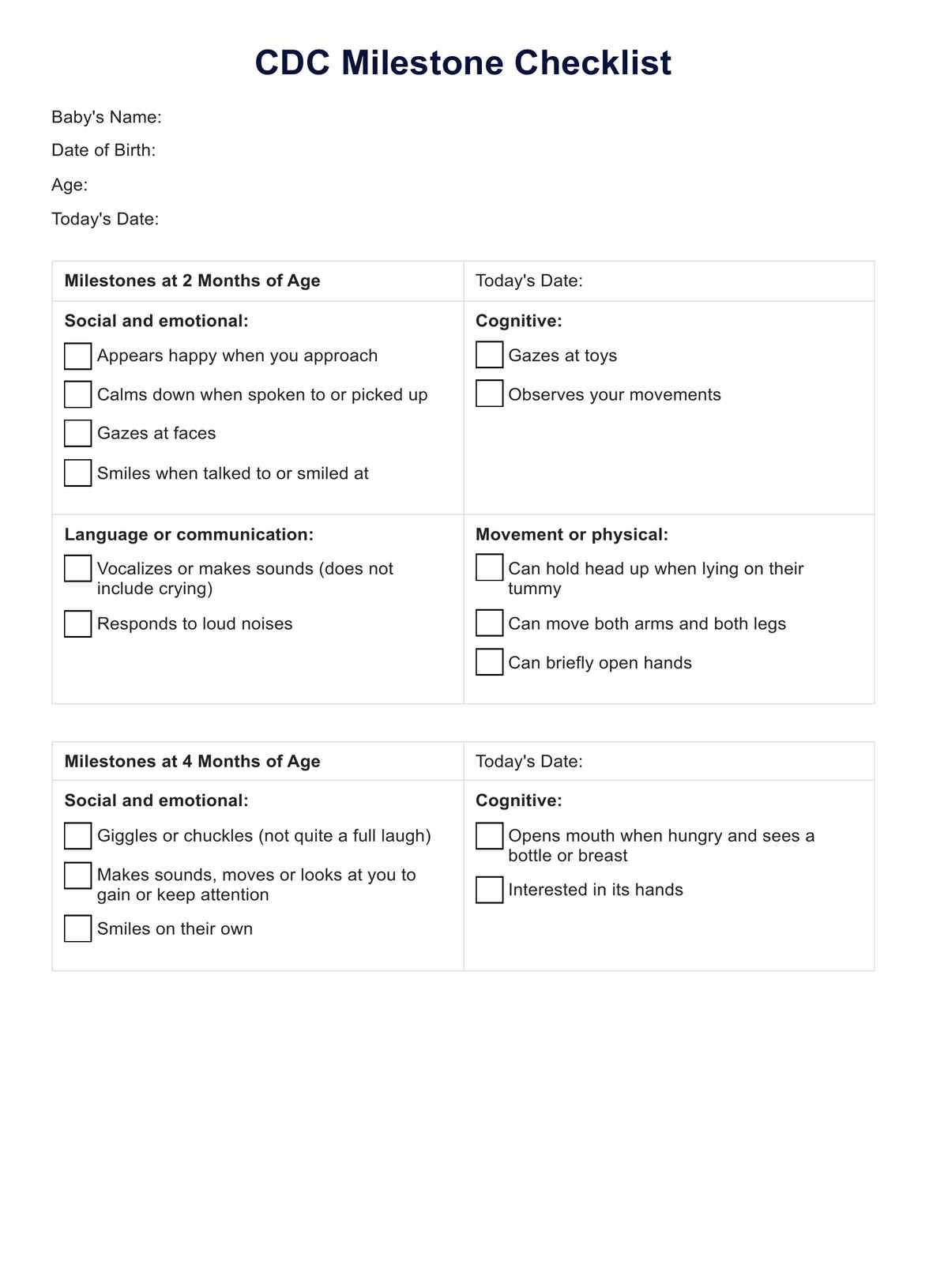Yes, the Centers for Disease Control and Prevention (CDC) did change developmental milestones in early 2022 as part of their "Learn the Signs. Act Early" program. The primary goal of the revisions, which were created in conjunction with the American Academy of Pediatrics (AAP), was to clarify when most children reach a milestone and encourage earlier action on potential developmental concerns. The changes involved shifting the milestone benchmark from the 50th percentile (what 50% of children can do) to the 75th percentile (what 75% or more of children can do), adding checklists for 15- and 30-month-olds, and removing some milestones and vague language to make the checklists easier for parents to understand.

CDC Milestone Checklist Template
Track your pediatric patient's developmental milestones with our free CDC Milestone Checklist template.
CDC Milestone Checklist Template Template
Commonly asked questions
The five developmental milestone domains, or areas, are generally categorized as: cognitive, which involves a child's thinking, learning, and problem-solving abilities; language/communication, which covers how a child expresses and understands language, including sounds, words, and gestures; social/emotional, which relates to a child's interactions with others and their expression of emotions; fine motor, which involves the use of small muscles, such as hands and fingers, for tasks like grasping or drawing; and gross motor, which involves the use of large muscles for movement activities like rolling over, sitting, crawling, and walking.
A developmental milestone checklist is a tool that provides a list of specific skills or behaviors that most children (typically 75% or more, according to the updated CDC guidelines) can be expected to achieve by a certain age. The checklist is divided into developmental domains and ages, and its purpose is to help parents, caregivers, and healthcare providers easily track a child's development, spot any potential developmental delays early on, and prompt a discussion or referral for further evaluation and intervention if a child is missing a key milestone.
EHR and practice management software
Get started for free
*No credit card required
Free
$0/usd
Unlimited clients
Telehealth
1GB of storage
Client portal text
Automated billing and online payments











